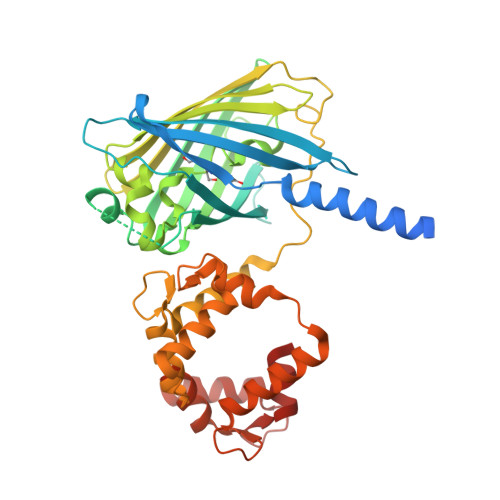Structural insight into enhanced calcium indicator GCaMP3 and GCaMPJ to promote further improvement.
Chen, Y., Song, X., Ye, S., Miao, L., Zhu, Y., Zhang, R.G., Ji, G.(2013) Protein Cell 4: 299-309
- PubMed: 23549615
- DOI: https://doi.org/10.1007/s13238-013-2103-4
- Primary Citation of Related Structures:
4IK1, 4IK3, 4IK4, 4IK5, 4IK8, 4IK9 - PubMed Abstract:
Genetically encoded Ca(2+) indicators (GECI) are important for the measurement of Ca(2+) in vivo. GCaMP2, a widely-used GECI, has recently been iteratively improved. Among the improved variants, GCaMP3 exhibits significantly better fluorescent intensity. In this study, we developed a new GECI called GCaMPJ and determined the crystal structures of GCaMP3 and GCaMPJ. GCaMPJ has a 1.5-fold increase in fluorescence and 1.3-fold increase in calcium affinity over GCaMP3. Upon Ca(2+) binding, GCaMP3 exhibits both monomeric and dimeric forms. The structural superposition of these two forms reveals the role of Arg-376 in improving monomer performance. However, GCaMPJ seldom forms dimers under conditions similar to GCaMP3. St ructural and mutagenesis studies on Tyr-380 confirmed its importance in blocking the cpEGFP β-barrel holes. Our study proposes an efficient tool for mapping Ca(2+) signals in intact organs to facilitate the further improvement of GCaMP sensors.
Organizational Affiliation:
National Laboratory of Biomacromolecules, Institute of Biophysics, Chinese Academy of Sciences, Beijing 100101, China.

















